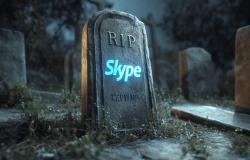
The American Secretary of Health, Robert F. Kennedy Jr., resumed this week various deceptive affirmations on vaccines this week, in particular that the measles vaccine contains cells from aborted fetus and that the mumps vaccine is ineffective.
The comments of Mr. Kennedy are intervening while the United States has faced one of the worst measles epidemics for 25 years. Scientists have warned that the United States was at a critical point for the return of endemic measles, declared eradicated nationally in 2000, and claim that US public health officials such as Mr. Kennedy should urgently approve highly effective vaccines.
Two children died and hundreds of others were infected during the Texas epidemic, which mainly affects a Mennonite community and spread to neighboring states, especially in New Mexico, Oklahoma and Kansas.
Kennedy, who has become the highest official in the country’s public health in February, has contributed for decades to sow doubt about the safety and efficiency of vaccines, which has led to a drop in vaccination rates.
Kennedy says he is not opposed to the vaccines, but he began to revive some of the unproven or refuted theories which he defended as a lawyer and public figure, now from his post at the United States Ministry of Health and Social Services.
“There are populations in our country, such as Texas’ mennonites, which have been the most affected and who have religious objections to vaccination, because the Ror vaccine contains many abortion fetus debris and DNA particles, and they therefore refuse to take it,” he said in an interview with News Nation on Wednesday.
Kennedy referred to the blended against measles vaccine, mumps and rubella. According to experts in vaccines, these vaccines do not contain “fetal debris” from abortions or intact fetal cells.
The rubella part of the vaccine is produced from a fetal cell line from an abortion practiced in the 1960s. The ROR vaccine does not contain these cells in its final form.
The cells are derived from fetal cells which have been reproduced for decades in laboratory test tubes, thousands of times from those of origin.
“The virus is cultivated in these cells, then purified, which means that everything that is not the virus is filtered, and only this attenuated virus remains that can not make sick,” said Dr. Miriam Laufer, acting director of the Center for the Development of Vaccines and Global Health at the University of Maryland.
According to an information sheet on the manufacture of vaccines published by the Philadelphia children’s hospital from the University of Pennsylvania, the amount of DNA used in the final preparation of the vaccine is minimal, of the billionth or the trillionème de Gramme.
“Although final vaccines do not contain intact fetal cells, they can contain traces of cells derived from cells, such as DNA fragments,” said Dr. Paulo Verardi, professor of virology and vaccinology at the University of Connecticut.
The Ministry of Health and Social Services did not respond to a request for comments.
Kennedy also said this week that the part of the mumps vaccine was not effective and that there were concerns about his safety.
“The problem actually comes from the part of the vaccine concerning mumps and combination. This combination has never been the subject of security tests, “he said on Monday during a live television program hosted by Dr. Phil.
According to the centers for the control and prevention of diseases of the United States, two doses of the ROR vaccine offer a protection of approximately 86 % against the mumps.
If it is true that vaccination protection can fade over time, the rate varies depending on the disease and the vaccine, said Verardi and other experts in vaccines.
“In the particular case of mumps, immunity can decrease, so that adults vaccinated during childhood can become sensitive again. However, vaccinated people generally have a more benign form of the disease in the event of infection, which remains an essential advantage of vaccination, “he said. (Report of Ahmed Aboulenein in Washington and Nancy Lapid in Tucson; additional report by Julie Steenhuysen in Chicago; edited by Caroline Humer and Stephen Coates)







